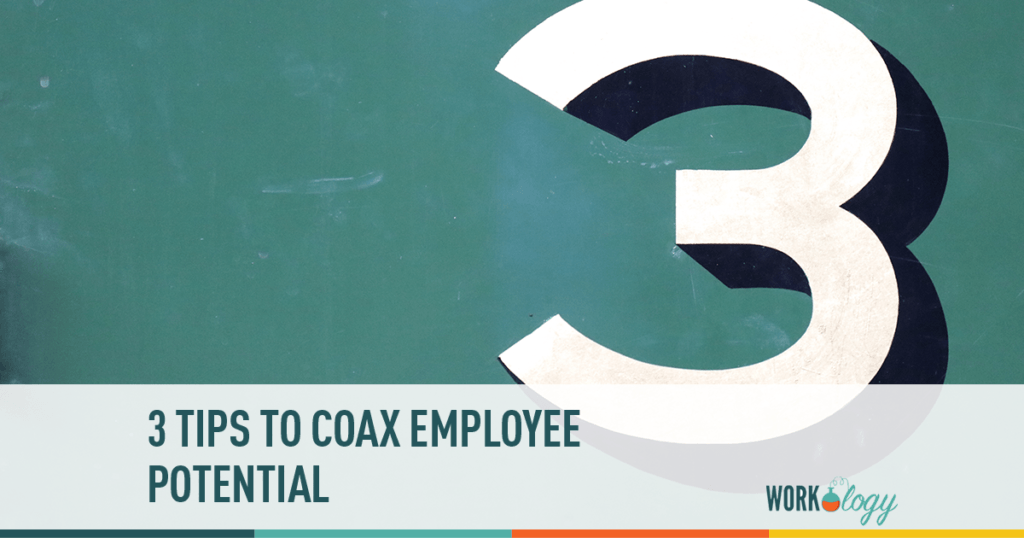3 Tips to Coax Employee Potential
Recently, I found myself talking to a manager about an unexpected opening in his department. He had no one ready to fill the position but couldn’t leave the role completely vacant while we searched.
After some discussion, we decided on an interim appointment until the best candidate was identified. The interim appointment could keep things running but just wasn’t ready to take on full responsibility and accountability for that role. The interim appointment needed additional training and development before taking on the role — and it wasn’t the kind that could be done on the job.
In general, I’m not a fan of “acting” or “interim” or “temporary” roles. Interim appointments say “we thought this person would be here forever so we didn’t create a plan for the day they decided to leave.” It is a failure on the organization’s part to plan properly for succession.
However, it is a better solution than promoting someone out of necessity. Promotions should never happen before a person is ready. It is hurtful to the organization and the person. So if there is no identified successor, an interim appointment is an appropriate alternative — as long as the person knows it is an interim appointment and knows what is expected of them while filling the role.
“I don’t know how to do that.”
Huh?
“Setting expectations before someone takes on the job. I’ve never done that before. I’ve done only ever done improvement plans.”
It sounds crazy … but I would bet he’s not alone. Often we become so used to coaching employees back from mediocrity or failure that we forget to coach their promise. It is arguably easier to help someone struggling to improve their performance than to help someone already succeeding to push further and do more. It can feel more normal to correct mistakes than it feels to coax potential.
But coaxing potential is what development is all about. It is something managers should know how to do — and look forward to doing and doing often!
If you’ve never done it before — or if you haven’t done it in a long time — here are a few tips:
- Tell the person what they are doing well. Cite their accomplishments and the improvements you’ve already seen in their performance to demonstrate their success and capacity for more.
- Tell the person what they don’t know and what it will take to learn it. Be clear about the aspects of the job they don’t yet know which makes them unsuitable
for promotion at this time. Give clear directives and instructions on how and where to gain the knowledge and/or skills needed. Provide reasonable timelines on how long it will take.
- Tell the person how long the interim appointment will last and what happens when it is over. Interim is not indefinitely. It is supposed to come to an end. Before it starts, both parties should know approximately when that will be. Both parties should also know what’s next when the interim role ends. And both parties should be in agreement with this — in written form, if possible. This especially includes any compensation, allowance or bonus which would be included in the interim.
No matter the circumstances, we must always make time to talk with our subordinate employees about their performance, potential and ideas for where their career with the organization could go … Because if you don’t talk to them about their future with your organization, eventually, someone will talk to them about a future with theirs!









